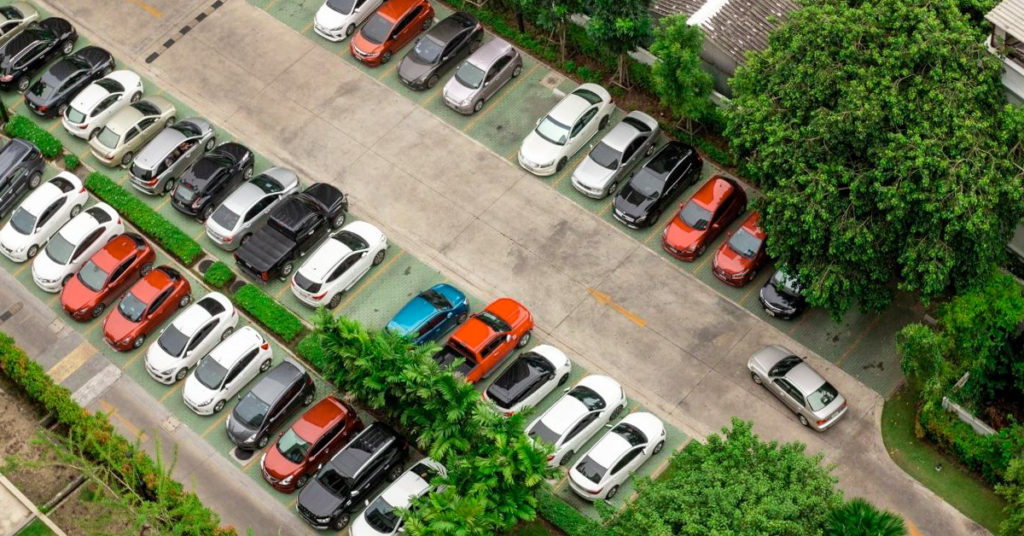It doesn’t matter if you are Overlanding and rarely visiting towns and cities, or if you are driving in the city every day, you often find yourself looking to park your vehicle in a parking lot.
One might think that the way they park their car is straightforward enough, but some people would disagree. The rules of parking in some states forbid you to park in reverse in perpendicular parking lots.
Why Is Back-in Parking Prohibited?
Backing into a parking spot is prohibited because of the damage done to the buildings and plants. Most importantly, police, parking enforcement officers, or meter maids can’t check the license plates of the backed-in vehicle while passing by. The last issue is the most common in the states where cars don’t have front license plates.
Most of the time, we don’t overthink how to park our car. It is easy enough process when you have a perpendicular parking spot. You just drive in nose-first.
That kind of thinking is common for 76% of drivers in America (The National Highway Traffic Safety Administration research), and the rest tries to park backing into a parking spot. While backing in is a recommended way of parking by many insurance companies and NHTSA themselves because of safety issues, it is not always possible.
License Plate Visibility
Many towns and cities prohibit parking in reverse because the license plates in most vehicles are located only in the back. If a car were to back into a parking lot, the officer that checks for parking permits (which are often assigned to a license plate) wouldn’t be able to see it. The same goes for law enforcement while checking for car registration.
Many people complain about parking rules forbidding parking in reverse, making it seem like the law enforcement and parking officers are too lazy to get out of their vehicle to check the plates. That’s not the case because if an officer were to get out of their car to check every license plate of a backed-in vehicle, it would cause a little congestion (they do need to stop!).
Damage to the Property
Another reason is to prevent car fumes from destroying buildings’ facades, killing off shrubbery and trees planted alongside the parking lot, and controlling said fumes from coming into apartments through the windows facing the parking lot.
Many parking lots placed directly in front of buildings have signs posted informing drivers of the way they should park. The fumes exuded from backed-in vehicles often make a residue on buildings, changing the color of facades, and in the case of apartment buildings, the fumes are directed into apartments through windows.
In some places, there are rules pertaining to particular areas and specific parking lots around the cities in certain states. Those rules also include fines in case of violation. It is wise to pay attention to all the signs around the parking lot or garage, and even though nobody is going to end up in jail for not obeying the rules, it is usually easier to avoid fines.
There is also a case of angle parking (but not the back-in diagonal parking), which is regulated by a law prohibiting back-in parking by vehicles other than a two-wheeled motorcycle, motor-driven cycle, or moped. We can certainly agree that it wouldn’t make sense to back into an angled parking spot anyway.
In Which States is Back-in Parking Illegal?

There is one very confusing law in Hawaii. If you ever happen to take your rig all the way to the middle of the Pacific or manage to rent a vehicle there to visit the Islands, you need to be on the lookout. The law states that it is illegal to park in reverse on state parking lots with parking meters. It doesn’t apply to other parking lots – public without meters or private.
In California, the state law doesn’t prohibit reverse parking, but some jurisdictions have rules for cars on public parking lots. The law states that one needs to display the rear of the car so law enforcement can check the license plate.
The same situation is in Florida. There is no state law making back-in parking illegal, but if you see a sign telling you not to do it, don’t.
Apart from Florida, 18 other states don’t require you to have a front license plate on your vehicle. Because of that, in those states, there might be more rules in public parking lots in certain cities telling drivers which way they should park their cars. Those states are:
- Alabama,
- Arizona,
- Arkansas,
- Delaware,
- Georgia,
- Indiana,
- Kansas,
- Kentucky,
- Louisiana,
- Michigan,
- Mississippi,
- New Mexico,
- North Carolina,
- Oklahoma,
- Pennsylvania,
- South Carolina,
- Tennessee,
- West Virginia.
If you find yourself Overlanding through any of those states, keep an eye on the signs in towns and cities. The most common and unmarked place that you will not be allowed to park in reverse would be public parking with parking meters. So, just in case, park facing in to avoid any parking tickets.
Advantages and Disadvantages of Back-in Parking
Pros
Easer to pull out – It’s as simple as driving forward. Once the coast is clear and you can safely pull out of the parking spot, you don’t need to maneuver too much to pull out.
Better view – While reversing out, your car needs to come out nearly 1/3 of the way out of the parking spot in order for you to see oncoming traffic. While you look one way for cars, there might be pedestrians still in your blind spot. While parked backed in, you have a clear view of the traffic and smaller blind spots.
Emergency – It is faster to pull out of the parking spot in case of emergency if you are facing traffic. As stated above, it is more maneuvering and big blind spots when you are parked nose-in, and it all makes up time when you don’t need it. When you are in a hurry, there are more chances of missing a cyclist or pedestrian when backing out of a parking spot.
Cons
Learning – It takes a little bit more time to learn how to park in reverse.
Congestion – It also takes a little bit more time to perform backing in parking. Instead of driving right into a parking spot, one needs to drive past it and reverse with care, which sometimes blocks the traffic behind.
Collisions – If you are not careful enough or don’t have parking sensors or cameras, there is a chance you may hit something that is below the level of your rear window directly behind your car.
Conclusion
Many insurance companies recommend back-in parking for safety reasons. Every year there are around 300 deaths and 15 000 injuries obtained on parking lots in the U.S. The statistics say it’s because reversing out of the parking spot is more dangerous than reversing in.
Despite that fact, many municipalities and private parking owners in the U.S. prohibit back-in parking. There are reasons for it. The car fumes in the apartments or difficulty reading license plates are few.
As overlanders, we don’t often find ourselves in cities or towns, preferring to stay off the beaten path, but we need to be aware of all the rules and regulations when the time comes.
- Tips and tricks For Setting Up Camp Like a Pro - September 11, 2023
- The Best Multi-Tools for Overlanding Adventures - August 25, 2023
- Off-Road Navigation Tips for Overlanders - August 13, 2023



Pingback: Back in parking prohibited перевод — Учим английский вместе